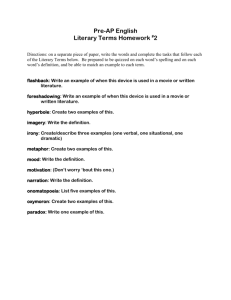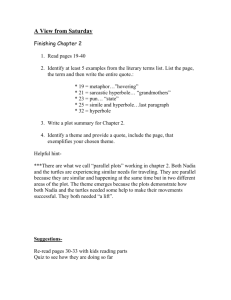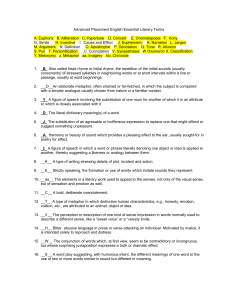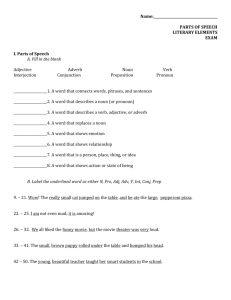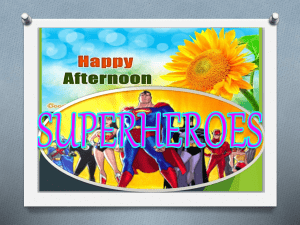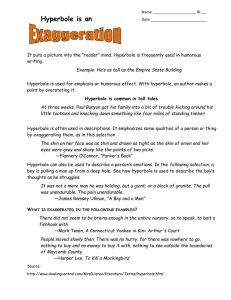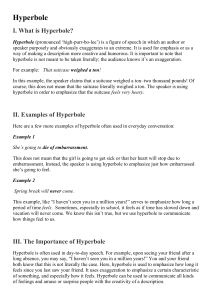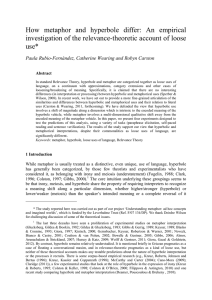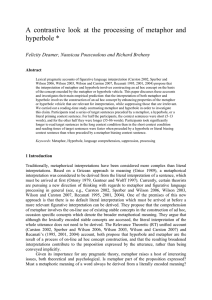Literary Terms: Definitions & Examples
advertisement
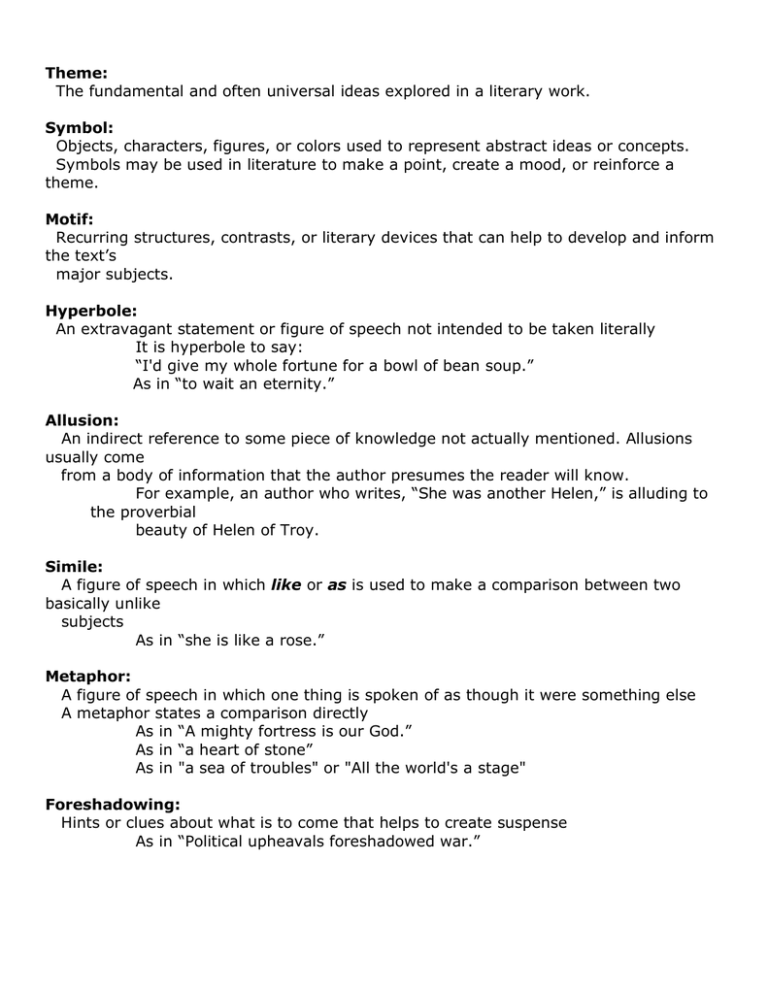
Theme: The fundamental and often universal ideas explored in a literary work. Symbol: Objects, characters, figures, or colors used to represent abstract ideas or concepts. Symbols may be used in literature to make a point, create a mood, or reinforce a theme. Motif: Recurring structures, contrasts, or literary devices that can help to develop and inform the text’s major subjects. Hyperbole: An extravagant statement or figure of speech not intended to be taken literally It is hyperbole to say: “I'd give my whole fortune for a bowl of bean soup.” As in “to wait an eternity.” Allusion: An indirect reference to some piece of knowledge not actually mentioned. Allusions usually come from a body of information that the author presumes the reader will know. For example, an author who writes, “She was another Helen,” is alluding to the proverbial beauty of Helen of Troy. Simile: A figure of speech in which like or as is used to make a comparison between two basically unlike subjects As in “she is like a rose.” Metaphor: A figure of speech in which one thing is spoken of as though it were something else A metaphor states a comparison directly As in “A mighty fortress is our God.” As in “a heart of stone” As in "a sea of troubles" or "All the world's a stage" Foreshadowing: Hints or clues about what is to come that helps to create suspense As in “Political upheavals foreshadowed war.”



